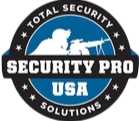
When it comes to providing protection for soldiers and law enforcement on the front lines, modern governments around the world depend on the bulletproof shield to stop dangerous projectiles from injuring officers. These ballistic shield units come in many different shapes and styles, each designed to function in a different manner.
What the Bulletproof Shield Can Do
Most commonly seen in the modern media as thick-looking units that a SWAT team is using to approach a dangerous individual or situation, these shields have taken on the mythology of being capable of stopping anything at any time, and fired from any range. This simply is not so. If you want to purchase a ballistic shield, you need to understand the different levels of bulletproof protection available, and what they mean in terms of safety for the person crouched behind them.
Anything that is not directly behind the shield, however, is still susceptible to being shot. Because of this, ballistic helmets and shin guards are commonly worn by law enforcement and military who are facing the dangerous situations that these units are used in. Take care to protect any area of the body that may peek around the shield at any point in time for the ultimate protection.
Historical Use
In historical terms, the original ballistic shields were a little more than shaped pieces of sheet metal. These sometimes had a thin, unprotected eye slot so that their users could see through them. They were extremely heavy, difficult to wield, and had poor hand grips on the insides. Although they were effective, their lack of vision, cumbersome weight, and awkward gripping options made them difficult to use in tactical situations.
Modern Ballistic Shield Styles
The modern ballistic shield has changed dramatically, and varies in shape and size depending on the shield's intended use. Some shields provide a standard square shape, meant to be used for advancing on a dangerous situation only. Bulletproof shield designs that are meant for returning fire are commonly square shaped at the base, with indentations on one or both sides through the upper area. These indentations permit the shooter to return fire while still having the maximum coverage of the shield available to their head areas.
All of these bulletproof shield styles are meant to be portable and carried into dangerous situations. They are constructed of the most modern ballistics materials and have wide view ports for maximum visibility. These viewing areas are constructed from bulletproof glass for safety.
Some models include options flashing LED lights in the front to draw attention. Many of these ballistic shields provide ambidextrous arm mounts on the back side, and come with additional padding to help cushion blows that impact areas adjacent to the bearer's body. The heaviest models are designed on tip-resistant wheel assemblies for easiest mobility.
Bulletproof Rating
In order to know if a ballistic shield has what you need, you must know what its bulletproof rating is. The standard bulletproof rating is classified as NIJ, meaning the National Institute of Justice. This branch of the United States government that is responsible for all research within the United States Department of Justice. The NIJ initials should be looked for as a sign that a device is up to these national standards.
Any item that is capable of stopping a bullet will be rated, at minimum, NIJ Threat Level Type IIIA. Commonly referred to simply as NIJ IIIA, this is the lowest level of ballistics material available. This rating will stop the average handgun available for purchase in America. This includes the 9mm and the .45. These units are generally lightweight and easy to maneuver with.
When you find a ballistic shield that is rated NIJ IIIB, this means that it is capable of stopping the average rifle or shotgun from piercing the unit. NIJ IIIB rating is more difficult to obtain, and requires a denser material. This results in a higher weight ratio per square inch, and can be more strenuous to the wielder.
The rating NIJ IV is reserved for those bulletproof shield units that are capable of stopping armor piercing rifle rounds. This highest level of ballistics protection requires very dense material, and is generally incapable of being hand-held. These units are usually mounted on wheel bases and positioned so that both hands guide the unit from the backside.
Common Uses
Knowing which situation you are heading into will mean all the difference in which ballistic shield you choose to protect yourself with. When you know what weapons the assailant has, you can make this decision more easily. Most law enforcement officials will automatically use NIJ IIIA or IIIB bulletproof shield units, and will only bring out the NIJ IV shields when the situation directly calls for them.

0 comments